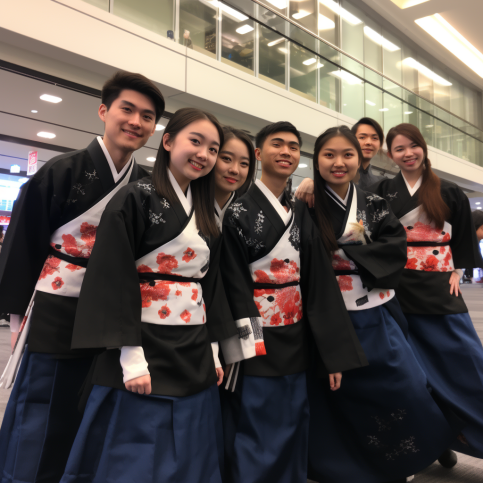South Bay school district considers a plan to save Japanese at Lynbrook High

The district’s Japanese programs are nationally recognized for churning out wins at the country’s Japan Bowl.
Only a few months ago, one of the country’s most prestigious high school Japanese programs faced extinction. The Fremont Union High School District had planned to phase out Japanese classes at three of its five campuses due to declining enrollment, but after an outpouring of community opposition, the district is reconsidering.
Although a final decision will not be made until January, efforts are being made to keep the program at Lynbrook, Homestead, and Fremont high schools while discontinuing it at Cupertino and Monta Vista. Chinese will continue to be offered at Homestead, despite community opposition to the proposed cut, while French will be phased out at Fremont High.
According to the district, enrollment in Fremont Union’s world language offerings has dropped by 18% since 2019, while total enrollment has dropped by 12%. Fremont Union also expects its student population to decline by over 2,000 students over the next five years.
“As enrollment declines, it provides an opportunity for all of us to reflect on our educational values.” What are our available resources, and what are our top priorities?” Jeremy Kitchen, a Japanese teacher at Lynbrook High School, explained. “I don’t think we’re out of the woods yet, as declining enrollment appears to be continuing.” Districts throughout this region will continue to face difficult decisions.”
Fremont Union is not alone. Schools throughout the Bay Area are grappling with declining enrollment and the funding, resourcing, and staffing implications that entails. Over the last six years, the district has spent more than $2.4 million overstaffing dwindling classrooms and has been forced to combine courses when enrollment falls below a certain threshold.
That is why, at first, the district proposed removing one language from each of its five high schools, reducing the number of campuses offering Japanese programs from all five to just two. After reviewing enrollment data this fall, the district determined that Lynbrook had “sufficient student sign ups” in all four language offerings to keep the programs running — and students like 12th grader Maya Swaminathan can breathe a sigh of relief.
“Japanese is really what makes Lynbrook strong,” Swaminathan explained. “Of course, we have departments of computer science and STEM.” But it’s the Japanese that really set Lynbrook apart.”
Lynbrook and other high schools in the district have competed in the Japan Bowl for many years, a national competition in which students compete in Japanese language, culture, and history. There have only been two years since 2013 when a Fremont Union High School district team did not win first place in at least one of the competition’s three levels. Even during those years, Cupertino or Lynbrook high schools won every second prize except one.
Cupertino High students won first place in two of three Japan Bowl levels last spring. Lynbrook finished second in all three.
“Without a Japanese program at Cupertino, those students will be hard-pressed to participate in the Japan Bowl in the future,” said Andy Tsai, a former Lynbrook Japanese student. “In an increasingly competitive admissions environment, it’s removing one avenue by which students can differentiate themselves and demonstrate academic and extracurricular excellence.”
That decision, however, is not final. The proposed secondary plan is “tentative,” according to district spokesperson Rachel Zlotziver, and is subject to confirmation of next year’s enrollment projections in December. The district will then notify schools of their course offerings for the following academic year the following month.
Despite the disappointment of losing Japanese in Cupertino and Monta Vista, Ann Jordan, a retired Japanese language teacher in Los Gatos, said the district had taken the community’s concerns seriously.
“I don’t think they were expecting the level of scrutiny that came upon them (after the phase-out was first announced in April),” Jordan said. “But I do think they listened to the public and tried to come up with a less drastic solution.”





